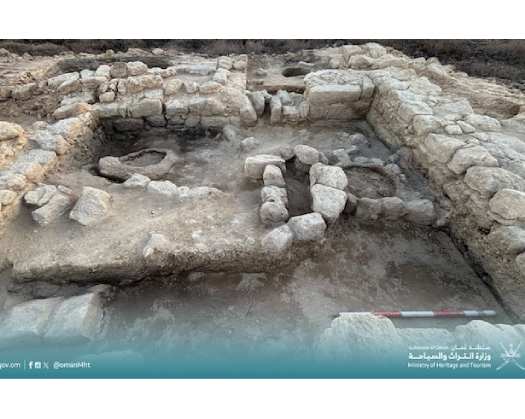Muscat: The Ministry of Heritage and Tourism (MHT) of the Sultanate of Oman, in partnership with the University of Naples, Italy, has revealed important discoveries from the seventh season of archaeological excavations at the Al-Baleed site in the Dhofar Governorate. These ongoing efforts are illuminating the rich historical significance of this key Omani location.
The recent findings concentrate on a complex of buildings situated to the south of the fort and the Al-Baleed Mosque, in proximity to the Al-Furda area and along the route to the southwestern gate. This structure features multiple small rooms, designated hearth areas, and several ovens. Such elements provide critical insights into the daily lives and activities of the inhabitants during the later phases of the site's occupation.
Notably, the excavations have uncovered a large number of shells along with a varied assortment of artifacts. These items, which include both locally made and imported goods from regions such as India, Africa, and China, serve as compelling evidence of Al-Baleed's significance as a bustling trading hub between the 16th and 18th centuries. The discovery of these foreign products highlights the extensive trade networks and the site's integration into broader regional and global economic frameworks.
These ongoing archaeological initiatives underscore the Ministry's dedication to preserving and comprehending Oman's cultural heritage. Through careful investigation and international collaboration, the work at Al-Baleed continues to enhance our understanding of Oman's historical narrative and its significance in the broader context of history.












